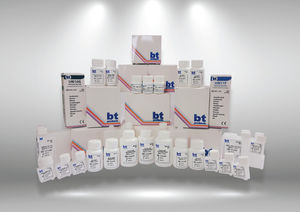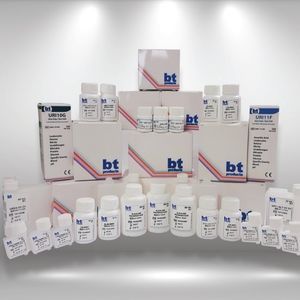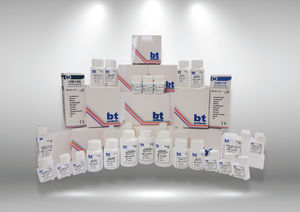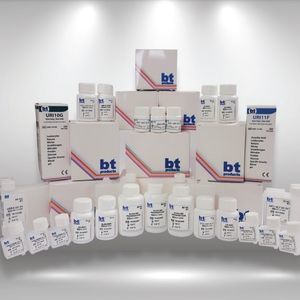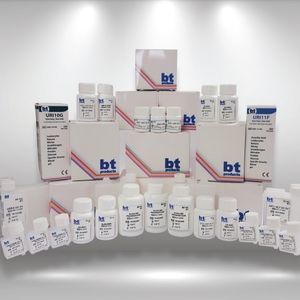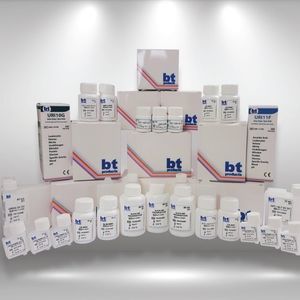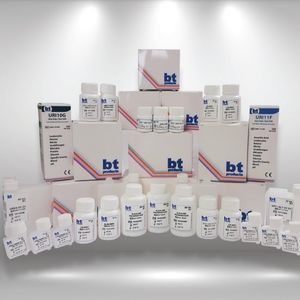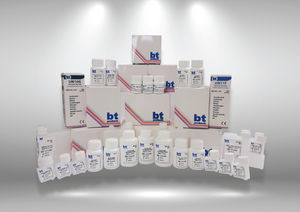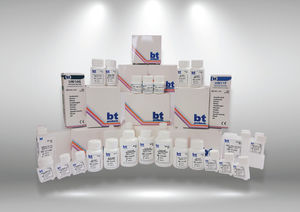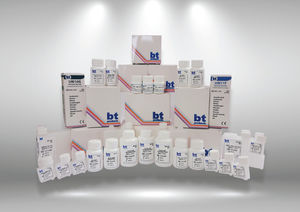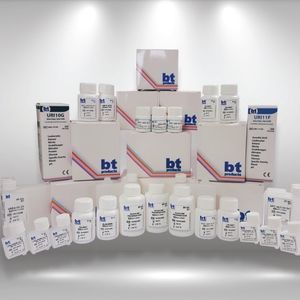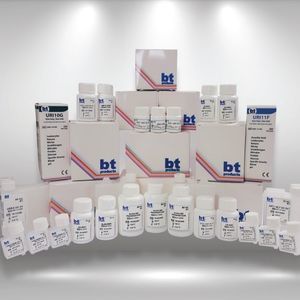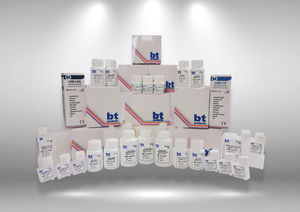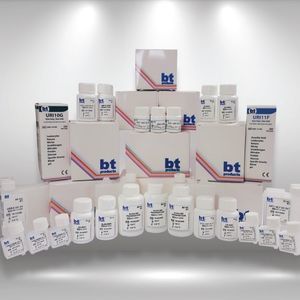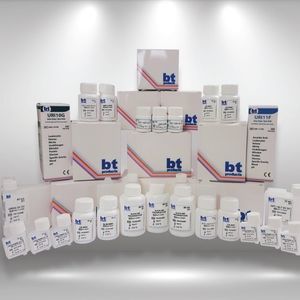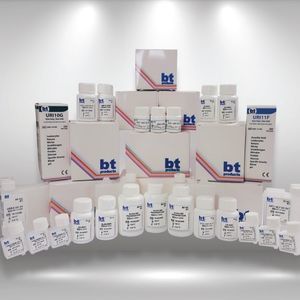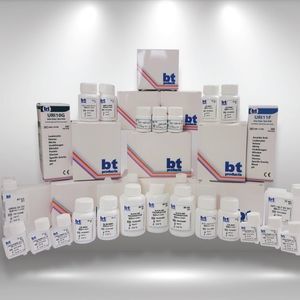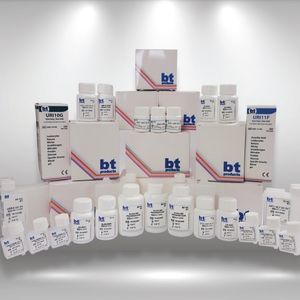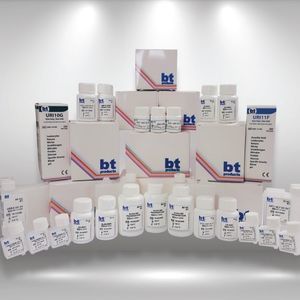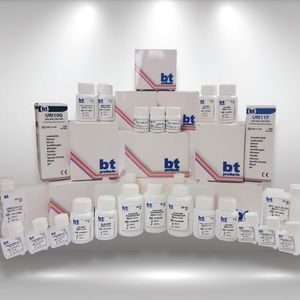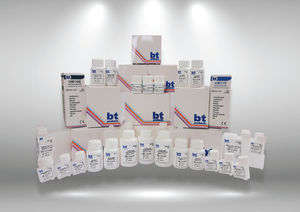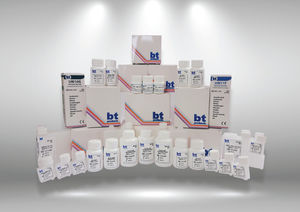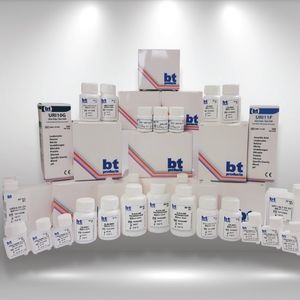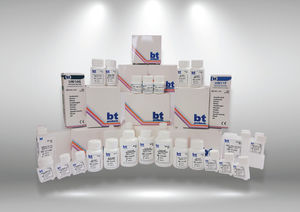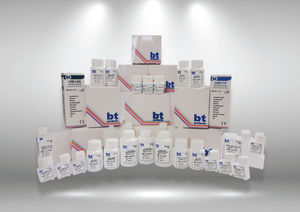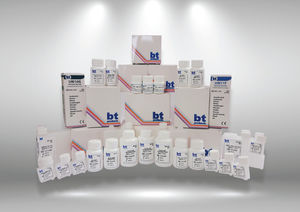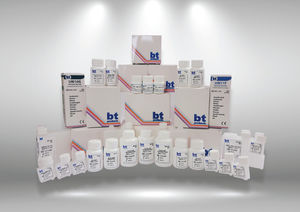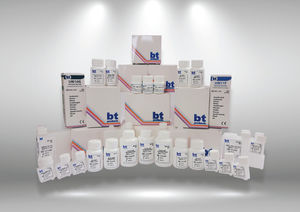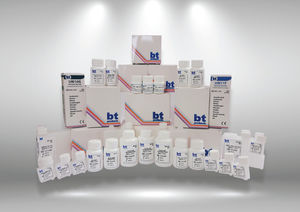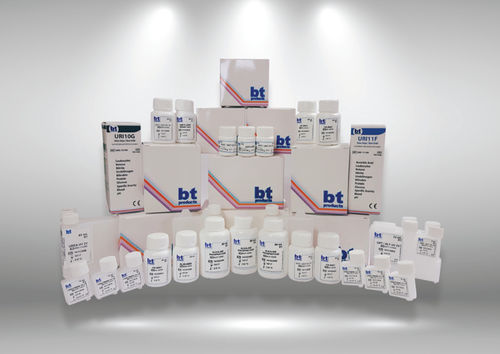
- Laboratory
- Laboratory medicine
- Albumin reagent
- BILIMSEL TIBBI ÜRÜNLER
Protein reagent kit CSF-20 seriespreservativealbumindiagnostic
Add to favorites
Compare this product
Characteristics
- Type
- preservative, albumin
- Applications
- diagnostic, calibration
- Tested parameter
- protein, sodium
- Method
- colorimetric
- Storage temperature
Min.: 2 °C
(36 °F)-70 °C, -20 °C
(-94 °F, -4 °F)Max.: 8 °C
(46 °F)
Description
For the quantitative determination of total protein concentration in urine and cerebrospinal fluid (C.S.F). For in vitro diagnostic use only.
METHOD HISTORY
Many methods for measuring protein in urine have been reported, including some automated ones . However,none is completely satisfactory because the range of linearity in the calibration curves in these methods is too narrow or because repetitive measurements are disturbed by the shift of the baseline caused by (dye) reagents adhering to the wall of the cuvet. The total protein test for urine is based on the procedure developed by Watanabe which is a dye-binding colorimetric method utilizing pyrogallol red-molybdate complex, and modified to equalize the reactivities of albumin and g-globulin, and provide good precision and linearity.
PRINCIPLE
At acid pH( pH 2,5)The pyrogallol red is combined with molybdate forming a red complex. When this complex is combined with protein in acidic conditions, a bluepurple color develops with an increase in absorption to 600 nm. The colour intensity is directly proportional to the protein concentrations present in the sample.
PRECAUTIONS
1. This reagent is for in vitro diagnostic use only.
2. All specimens used in the test should be considered potentially infectious. Universal precautions as they apply to your facility should be used for handling and disposal of materials during and after testing.
3. The reagent and standart contains sodium azide
INTERFERENCES
It is recommended not to use urine specimens with added preservatives since some preservatives, such as HCl, Benzoic acid have shown to interfere in the protein assay, giving false low results.
Catalogs
No catalogs are available for this product.
See all of BILIMSEL TIBBI ÜRÜNLER‘s catalogsOther BILIMSEL TIBBI ÜRÜNLER products
Universal Bottled Clinical Chemistry Reagents
Related Searches
- Solution reagent kit
- Protein reagent kit
- Diagnostic reagent kit
- Laboratory reagent kit
- Enzyme reagent kit
- Histology reagent kit
- Dye reagent
- Antibody
- Buffer solution reagent kit
- Clinical chemistry reagent
- Quality control reagent kit
- Clinical chemistry analyzer
- Clinical reagent kit
- Virus reagent kit
- Automatic clinical chemistry analyzer
- Benchtop clinical chemistry analyzer
- Test strip
- Tissue reagent kit
- Electrolyte reagent kit
- Colorimetric reagent kit
*Prices are pre-tax. They exclude delivery charges and customs duties and do not include additional charges for installation or activation options. Prices are indicative only and may vary by country, with changes to the cost of raw materials and exchange rates.



